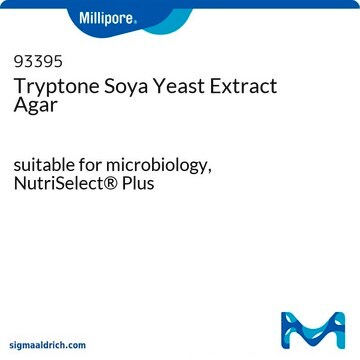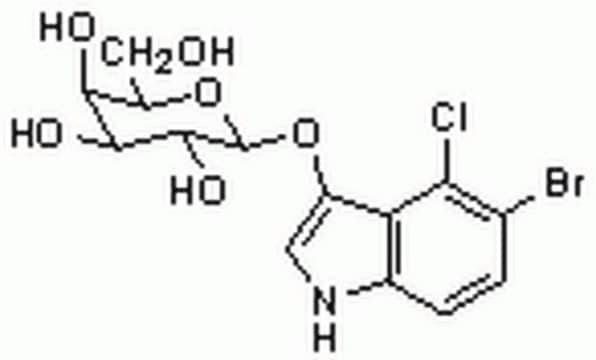83650
L-Rhamnose monohydrate
≥99.0%, suitable for microbiology, Naturally occurring deoxy sugar that is found primarily in plants and some bacteria
Synonyme(s) :
6-Désoxy-L-mannose, L(+)Rhamnopyranose
About This Item
Produits recommandés
Niveau de qualité
Pureté
≥99.0% (HPLC)
≥99.0%
Forme
powder
Activité optique
[α]20/D +8±0.5°, 2 hr, c = 5% in H2O
Résidus de calcination
≤0.1% (as SO4)
Pf
90-95 °C
Solubilité
H2O: 0.1 g/mL, clear, colorless
Traces d'anions
chloride (Cl-): ≤50 mg/kg
sulfate (SO42-): ≤50 mg/kg
Traces de cations
As: ≤0.1 mg/kg
Cd: ≤5 mg/kg
Co: ≤5 mg/kg
Cu: ≤5 mg/kg
Fe: ≤5 mg/kg
Ni: ≤5 mg/kg
Pb: ≤5 mg/kg
Zn: ≤5 mg/kg
Application(s)
microbiology
Température de stockage
10-30°C
Chaîne SMILES
O.C[C@@H]1O[C@@H](O)[C@H](O)[C@H](O)[C@H]1O
InChI
1S/C6H12O5.H2O/c1-2-3(7)4(8)5(9)6(10)11-2;/h2-10H,1H3;1H2/t2-,3-,4+,5+,6+;/m0./s1
Clé InChI
BNRKZHXOBMEUGK-NRBMBCGPSA-N
Vous recherchez des produits similaires ? Visite Guide de comparaison des produits
Catégories apparentées
Description générale
Rhamnose can also be fermented by several microorganisms like E. coli, Enterobacter, Citrobacter, Klebsiella and some species of Salmonella. Acid production from rhamnose is a characteristic phenotype of Listeria monocytogenes. Therefore, rhamnose can be used for differentiation and identification of bacteria, it is used in media like Rhamnose broth or Phenol red Rhamnose broth.
Application
L-Rhamnose monohydrate is used in many media formulations such as Rhamnose broth or Phenol red Rhamnose broth to facilitate differentiation of bacteria that can ferment the sugar and those that cannot.
An understanding of the rhamnose-containing polysaccharides present in the cell walls of certain bacteria can enable us to identify biosynthetic pathways that can further be used as potential targets for antibacterial therapy.
Code de la classe de stockage
11 - Combustible Solids
Classe de danger pour l'eau (WGK)
WGK 3
Point d'éclair (°F)
Not applicable
Point d'éclair (°C)
Not applicable
Équipement de protection individuelle
Eyeshields, Gloves, type N95 (US)
Choose from one of the most recent versions:
Déjà en possession de ce produit ?
Retrouvez la documentation relative aux produits que vous avez récemment achetés dans la Bibliothèque de documents.
Les clients ont également consulté
Articles
Culture media provides a habitat with suitable nutrients, energy sources, and certain environmental conditions for the growth of microorganisms. The components of the culture media range from simple sugars to peptones, salts, antibiotics, and complex indicators.
Notre équipe de scientifiques dispose d'une expérience dans tous les secteurs de la recherche, notamment en sciences de la vie, science des matériaux, synthèse chimique, chromatographie, analyse et dans de nombreux autres domaines..
Contacter notre Service technique










